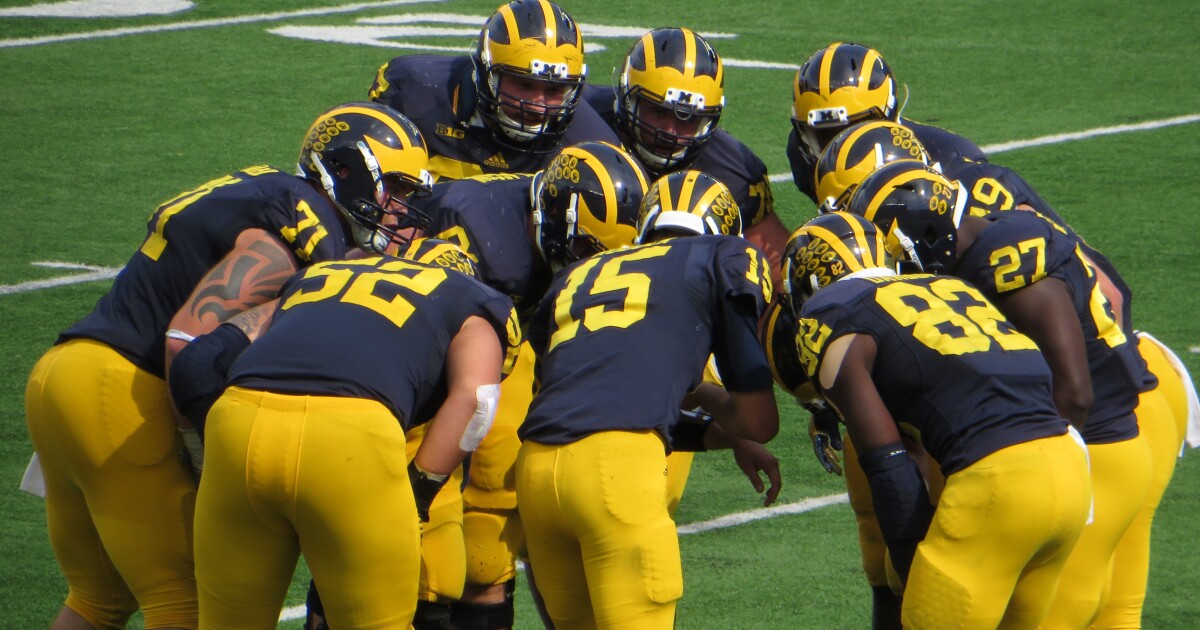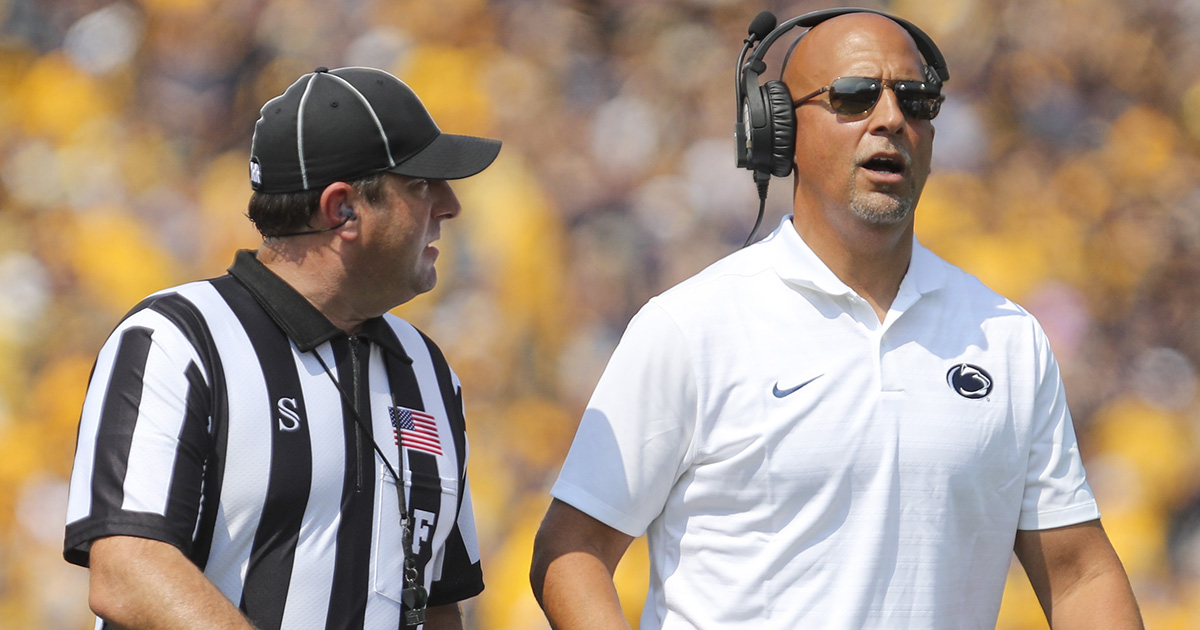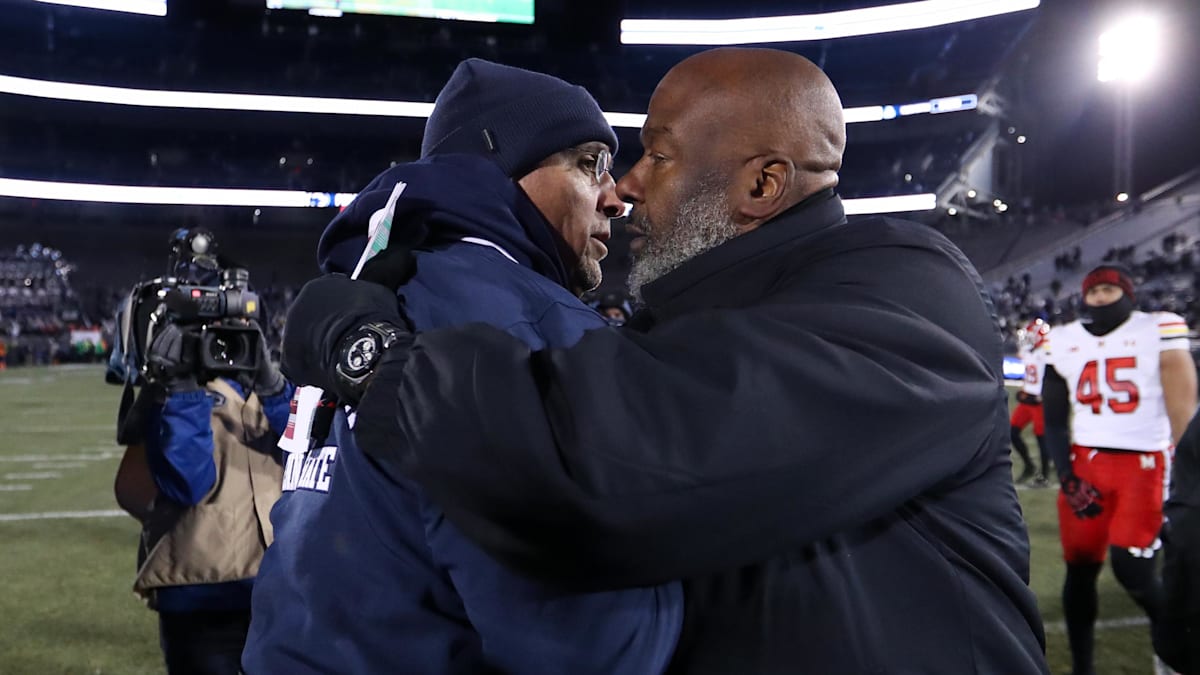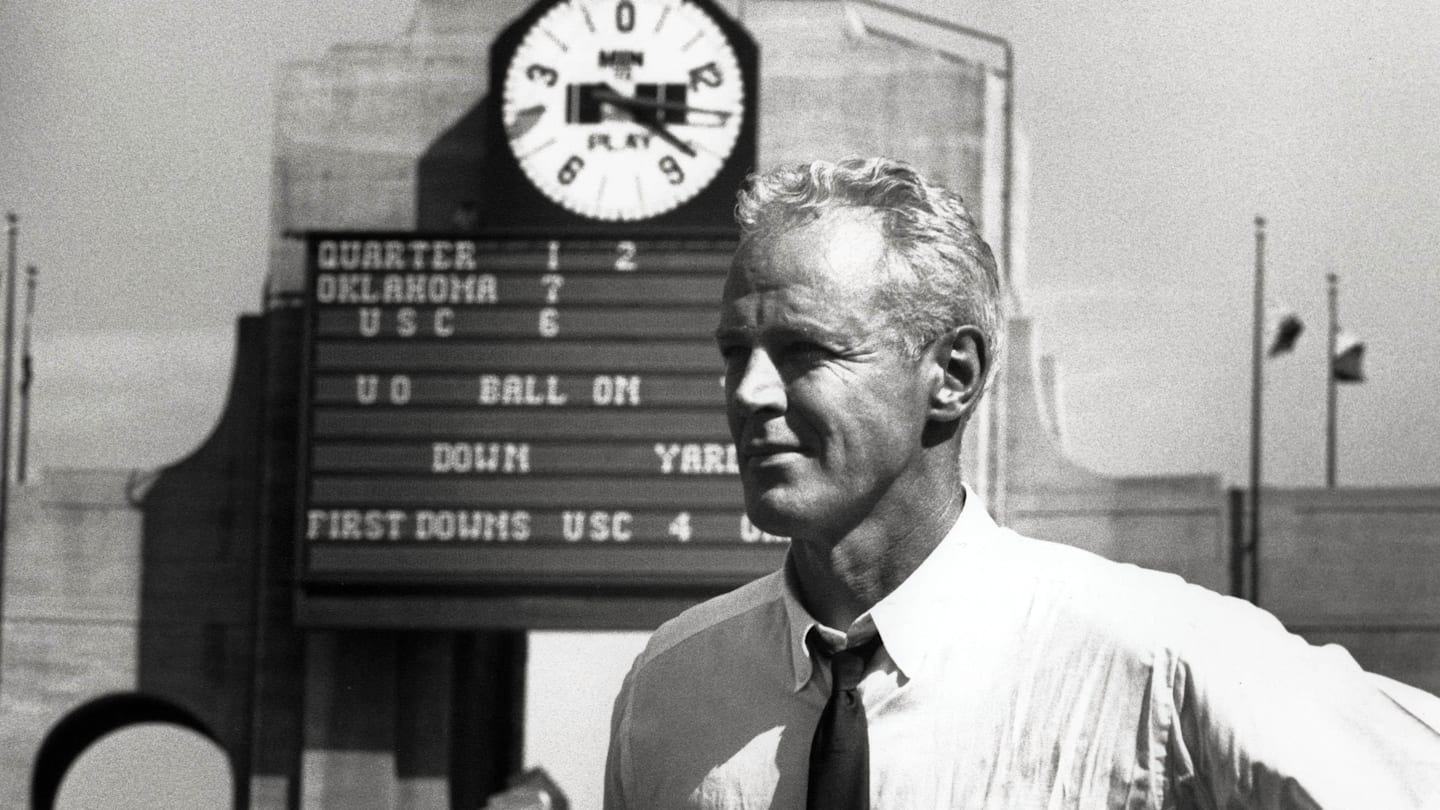NIL
Keeping track of the locals who were active in the transfer portal
There were over 2,000 players who entered their names in the NCAA Division I transfer portal this spring. And for the first time in history, more than half of the points scored in college basketball last season were from players from the transfer portal. So the need for portal impact never has been greater. The […]



There were over 2,000 players who entered their names in the NCAA Division I transfer portal this spring. And for the first time in history, more than half of the points scored in college basketball last season were from players from the transfer portal.
So the need for portal impact never has been greater.
The dizzying pace of the transfer portal includes dozens of former players from the Chicago area and throughout the state. Here are some familiar names from their high school days — the best of the best — including where they’ve been and where they are headed for the 2025-26 season.
Bryce Hopkins, Fenwick
Where he has been: Following a brief and uneventful stop at Kentucky, Hopkins emerged as a star at Providence. While injuries have hampered his career, the 6-6 former two-time all-stater remains a major, ultra-productive weapon at the college level when healthy.
Where he’s headed: Hopkins will stay in the Big East for his final season. He will play for Rick Pitino and a loaded St. John’s team which should be among the nation’s best.
Morez Johnson, Thornton
Where he has been: The former Sun-Times Player of the Year and top-ranked prospect in Illinois in the Class of 2024 spent just one year at Illinois. He made an impact as one of the top freshmen in the Big Ten,
averaging seven points and 6.7 rebounds while playing 18 minutes a game.
Where he’s headed: The powerful 6-9 big man will stay in the Big Ten as part of a Michigan portal class that is among the best in the country.
Owen Freeman, Moline
Where he has been: While at Iowa he averaged 10.6 points and 6.6 rebounds as a freshman. He followed it up last year with 16.7 points and 6.7 rebounds, though a finger injury in late January proved to be season-ending
Where he’s headed: As a legit 6-10 big man and former Big Ten Freshman of the Year two seasons ago, Freeman was one of the most coveted portal players in the country. He’s headed to Creighton where he will have two more years to play.
Rashaun Agee, Bogan
Where he has been: The veteran big man will be at his fifth school in six years this coming season. The most recent stop was at USC, where he averaged 9.4 points and 4.5 rebounds in 20 minutes of action.
Where he’s headed: Agee makes the move from the Big Ten to the SEC as he will finish up his career at Texas A&M. He will be one of eight new transfer-portal additions for first-year coach Bucky McMillan.
Brock Harding, Moline
Where he has been: After leading Moline to a state championship in 2023, Harding spent the last two seasons at Iowa. He started 24 games, playing 25 minutes a game, and averaged 8.8 points and 5.3 assists this past season.
Where he’s headed: TCU and coach Jamie Dixon landed the true point guard who will have two years to play in the Big 12.
Bobby Durkin, Glenbard West
Where he has been: After averaging 8.5 points as a freshman at Davidson, Durkin upped that number to 13.5 points as a sophomore and chipped in 5.9 rebounds. He continued his elite shooting with 91 three-pointers on the year.
Where he’s headed: Durkin had Ohio State and Louisville heavily involved but decided on Minnesota, joining first-year head coach Niko Medved.
Sam Lewis, Simeon
Where he has been: The athletic 6-5 wing enjoyed a breakout sophomore campaign this past season at Toledo, putting up 16.2 points a game while shooting 44% from three. He was an All-MAC second team selection.
Where he’s headed: Lewis was the first portal recruit for first-year coach Ryan Odom of Virginia.
Xavier Amos, Young
Where he has been: The 6-8 forward had a low-key freshman season at Northern Illinois two years ago. But he broke through as a sophomore, averaging 13.8 points and 5.8 rebounds. Then he transferred to Wisconsin where he spent his junior campaign playing a minimal role off the bench.
Where he’s headed: Amos is heading home, committing to Loyola and coach Drew Valentine for his senior season.
Bryce Heard, Homewood-Flossmoor
Where he has been: After leading H-F to a state championship in 2024 as a junior, Heard reclassified and headed to North Carolina State. He played very little as a freshman before coach Kevin Keatts was fired this spring.
Where he’s headed: With three years still to play, Heard will look to make an impact for coach Anthony Grant at Dayton.
Quentin Jones, Marian Catholic
Where he has been: One of the real sleepers in the Class of 2023. All Jones has done in two years of college is produce — first at Cal-Poly (9.7 poings, 4.4 rebounds as a freshman) and then at Northern Illinois (16.6 points, 4.8 rebounds as a sophomore).
Where he’s headed: With Saint Louis
in the Atlantic 10 as his next stop, Jones keeps taking a step up each year he plays in college.
Dai Dai Ames, Kenwood
Where he has been: The 6-2 scoring guard started at Kansas State, followed by a sophomore season at Virginia where he averaged 8.7 points a regular starter.
Where he’s headed: Cal will be his third stop in three years for Ames.
Others: Jurell Baldwin, Hyde Park (Missouri State to Arkansas State); Isaiah Barnes, Simeon (Tulsa to Valparaiso); AJ Casey, Simeon (Saint Louis to Evansville); Gianni Cobb, H-F (Columbia to NIU); Tyler Cochran, Bolingbrook (Minnesota to Rhode Island); Mekhi Cooper, Bolingbrook (Miami-Ohio to Lindenwood); Brayden Fagbemi, Benet (Central Arkansas to UC-Davis); Louis Lesmond, Notre Dame (Harvard to Fordham); Mekhi Lowery, Oswego East (Towson to UIC); Chris Riddle, Kenwood (DePaul to Toledo); Jaden Smith, Kenwood (Fordham to St. Joseph); and Asa Thomas, Lake Forest (Clemson to Furman).
NIL
Legislation would give protections to Michigan college athletes seeking name, image, likeness deals
There’s new legislation in Lansing aimed at preventing universities and other groups from interfering with Michigan college athletes earning money by marketing their name, image, or likeness —also known as NIL. NIL has become a profitable sideline for many Michigan athletes. Analysts say those deals can be worth millions of dollars, though most are more […]

There’s new legislation in Lansing aimed at preventing universities and other groups from interfering with Michigan college athletes earning money by marketing their name, image, or likeness —also known as NIL.
NIL has become a profitable sideline for many Michigan athletes. Analysts say those deals can be worth millions of dollars, though most are more modest.
But a recent settlement of a national anti-trust lawsuit may change the game.
The House v. NCAA settlement was finalized earlier this month. It resolves multiple antitrust lawsuits against the NCAA and its member schools, awarding $2.8 billion in back pay to athletes who were denied the chance to profit from their name, image, or likeness between 2016 and 2024.
The settlement also creates a framework for future revenue sharing between schools and student-athletes, allowing schools to directly pay athletes for NIL rights, and introduces new roster limits to replace scholarship limits.
However, a clause in the settlement that establishes a special commission to assess deals that student athletes can get is not being welcomed by NIL supporters.
Ramogi Huma, the executive director of the National College Players Association, said he believes such a commission would cost athletes.
“If such violations of Michigan’s NIL law do take place, it could cost Michigan college athletes tens of millions of dollars in NIL compensation each year,” said Huma.
And Thomas Dieters, the board president of Charitable Gift America, a group that negotiates NIL deals, sees the commission as essentially being unfair to student athletes.
“School administrators and coaches are very quick to negotiate their own seven figure contracts without a third party determining their value,” said Dieters, “Students should have those exact same rights.”
Former State House Speaker Joe Tate (D-Detroit) is a former standout athlete at Michigan State University, as well as a player in the National Football League. He’s currently running for Michigan’s open U.S. Senate seat in 2026.
Tate’s bill would block schools, conferences, governing bodies and other groups from interfering with athletes cutting their own NIL deals.
“One of the things that this legislation looks to do were not only protecting student athletes in their ability to take advantage of their name, image, and likeness — also empowering them,” said Tate.
A University of Michigan Athletics spokesperson declined to comment on the legislation.
NIL
James Franklin predicts how enforcement will change under College Sports Commission
After receiving long-awaited approval, the House v. NCAA settlement is now beginning its implementation process. The College Sports Commission is also now part of the landscape, tasked with enforcing key terms of the agreement. The newly formed entity – led by former Major League Baseball executive Bryan Seeley – will take the lead on enforcing […]

After receiving long-awaited approval, the House v. NCAA settlement is now beginning its implementation process. The College Sports Commission is also now part of the landscape, tasked with enforcing key terms of the agreement.
The newly formed entity – led by former Major League Baseball executive Bryan Seeley – will take the lead on enforcing rules in place under the settlement. Once Judge Claudia Wilken granted final approval, the commission launched and named Seeley as CEO shortly thereafter.
Penn State coach James Franklin previewed what the new enforcement model will look like. He acknowledged there could be some bumps in the road, but he’s hoping for a more streamlined process when it comes to making decisions.
“This is not going to be one of these things that we’ve all kind of grown up with under the NCAA where it goes on for two years and a lot of times, the coach is gone and the next coach is coming in and having to deal with it. … This is going to be something where decisions are going to be made and made swiftly,” Franklin told Urban Meyer on The Triple Option. “Very similar to, I think maybe a Major League Baseball model, an NFL model, is what they are trying to bring to college football.
“So I think in theory, I think you’ll like what they’re trying to do. As we both know, the theory of it and the reality are two different things, and there’s going to be some growing pains as we work through it. I’m hopeful.”
James Franklin: ‘I’m still learning every single day’
While the College Sports Commission will not replace the NCAA as far as enforcement goes, its key tasks will center around the House settlement. Topics such as revenue-sharing, roster limits and the new NIL Go clearinghouse will fall under its purview, and Bryan Seeley brings a strong investigative background from his time in MLB as executive vice president of legal and operations.
Documents also showed some of the policies in place by the CSC, including membership. The agreements spell out that institutions must waive their right to sue the commission, and schools could risk being kicked out if they don’t sign.
While James Franklin has not yet seen those specific documents, he pointed out the importance of signing. He also acknowledged the implementation committee in place to help lead the charge into the post-House world.
“Even when we were at Big Ten meetings, that still [was not] something that was out there for all of us to see, that they’re still working through the details,” Franklin said. “I think a lot of this, they were waiting until the judge formally made the decision. And then, there’s the implementation committee – partly from the NCAA, commissioners, athletic directors, that are part of implementing, basically, the House rules. And it’s going to go from there.
“We’re still learning, I’m still learning every single day and getting more information. But what has been explained to me, I think they’re hopeful, is the best way to describe it, that we can move in this direction.”
NIL
Two college football powerhouses in intense battle for $155,000 prospect
The Ohio State Buckeyes are fresh off a College Football Playoff national championship win over the Notre Dame Fighting Irish. In turn, the recruiting trail has been busy for head coach Ryan Day and his staff. Now, with the 2025 season still a couple of months away, Ohio State is in the running for an […]

The Ohio State Buckeyes are fresh off a College Football Playoff national championship win over the Notre Dame Fighting Irish.
In turn, the recruiting trail has been busy for head coach Ryan Day and his staff. Now, with the 2025 season still a couple of months away, Ohio State is in the running for an elite prospect.
That prospect is edge rusher Luke Wafle, who is rated as a four-star prospect by On3.
But, Wafle took a visit to USC over the weekend, and all signs pointed to Lincoln Riley beating Ryan Day for the talented pass rusher. That is, until a report from Steve Wiltfong of On3.
“Ohio State upped its NIL offer to become more competitive and keep the blue-chipper close to home. Wafle even informed USC that he was opting to stay closer to home. With that, I moved my expert prediction for Wafle on the On3 Recruiting Prediction Machine in favor of the Buckeyes,” Wiltfong wrote.
Wiltfong then mentioned that USC is increasing its NIL offer in hopes of luring Wafle to Southern California, so it is an intense battle for the edge rusher.
Currently, his On3 NIL valuation is at $155,000, and Wiltfong mentioned that sources suggest Wafle could get a deal of at least $500,000 per year.
This is not a meaningless recruit, either. Wafle is the No. 52 prospect in the Class of 2026 and the No. 10 edge rusher in the class, per On3, so this would be a massive pickup for either powerhouse program.
Wafle’s final five was USC, Ohio State, Texas, Penn State and Florida, but the New Jersey native is set to reveal his decision on June 19.
NIL
Sacramento State withdraws from Big Sky as Hornets move forward with risky bet on future FBS football success
Sacramento State has informed the Big Sky Conference of its intention to leave starting June 30, 2026, the league announced Thursday. The Hornets are expected to announce a move to the Big West for every sport but football starting July 1, 2026. The move will leave the Hornets without a football conference home starting next […]

Sacramento State has informed the Big Sky Conference of its intention to leave starting June 30, 2026, the league announced Thursday. The Hornets are expected to announce a move to the Big West for every sport but football starting July 1, 2026. The move will leave the Hornets without a football conference home starting next year as the school waits for final word on its waiver application to reclassify as an FBS school next season.
The waiver is tied to the NCAA’s “bona fide invitation requirement,” which sets an FBS conference invitation as a prerequisite for reclassification. The Hornets currently do not hold a conference invite, and would compete as an independent should they move up.
The FBS Oversight Committee recommended denying the waiver request last week, with the Division I Council set to make a final decision in the coming days. So what’s at sake for the Hornets? And how did they get to this point?
The big bet
Last year a prominent group of Sac State boosters formed the “Sac12” — an organization dedicated to raising the athletic department’s profile to a point it can earn a Pac-12 invitation in the future.
According to the group’s website, its goals include:
- Securing $50M in NIL commitments to cover the first 10 years in the Pac-12.
- Securing funding and approvals to build a football stadium that seats at least 25,000 attendees.
- Securing funding and approvals to build a basketball arena that can seat at least 6,000 attendees.
- Turning out at least 15,000 attendees per home football game for the remainder of the season
- Securing $5.25 million in conference fees for NCAA re-alignment into the Pac-12.
Taking the first toward these goals, the school announced construction on a new football stadium — set to open in 2026 — along with renovations to its basketball arena.
The athletic department placed a heavy bet on reclassifying with splash offseason hires for both the football and basktball programs. The school tapped Brennan Marion as its football coach, an up-and-coming coordinator from UNLV who drew interest from several FBS schools with coaching vacancies this past offseason. On the basketball side, the Hornets turned to former NBA All-Star Mike Bibby to to lead the team.
The moves certainly built some buzz around the football program. The Hornets signed an exceptoinal transfer class, headlined by former blue-chip quarterback prospect Jaden Rashada, who is expected to lead Marion’s exciting “Go-Go Offense” in 2025. Overall, the Hornets brought in 40 Division I transfers, 29 of which have significant playing time under their belts.
What’s at stake?
Many of Sac State’s strong offseason moves were made under the belief the football team would be playing in the FBS in 2026. A source told CBS Sports the program’s football budget is just north of $1 million for next year, but questions remain as to whether booster support can endure a multi-year transition process.
There’s also a strong chance several of the Hornets’ high-profile transfers could search for greener pastures after this season rather than toil away in the FCS ranks again in 2026.
As mentioned above scheduling would be complicated. While Marion told CBS Sports earlier this spring that the Hornets had an independent schedule ready for the 2026 season if the waiver was approved, compiling an FCS independent slate would be a much more difficult endeavor. The Hornets only have two opponents (Lamar and Fresno State) set for the season.
FBS schools are only allowed to count one FCS team per season toward bowl eligibility, and those opponents are usually set years in advance. The Hornets could be forced into buy games from Division II opponents, which would not only drain funds but further dampen positive momentum the school has made with its donor base.
What happens next?
Sacramento State’s waiver is tied to a similar move made by Liberty in 2017. The NCAA granted the Flames’ waiver, allowing them to play an independent schedule from 2018-22 before the program joined Conference USA.
The NCAA Oversight Committee was not swayed by the argument, pointing to drastic changes to the college football landscape over the past eight years.
“Although a waiver of the bona fide invitation requirement was granted in 2017, that decision was made in a different era, under a different set of facts and rules,” the council wrote in its waiver denial. “The Division I membership adopted the current legislation to affirm the importance of the nature and purpose of the subdivision reclassification process, choosing to place that decision-making authority with the council.”
On Wednesday, Sacramento State president Luke Wood penned a letter in response to the oversight committte’s statement:
This week, an NCAA committee recommended against granting Sacramento State a waiver to join FBS as an independent. We remain hopeful as the D1 council has the ultimate decision and authority. The rationale, that a lack of a conference invite ‘signals readiness,’ is flawed.
In a normal situation this rationale would make sense, except for we are located in a part of the country that has limited FBS conference options. The only reason we don’t have an invite is geography. Multiple FBS commissioners and presidents who are outside our region have told us directly they would welcome Sacramento State, but cannot make the travel work. Geography should not be a deterrent when a university is in a unique geographic situation. The last West Coast school to make the leap was Boise State, nearly 30 years ago.
A conference invite is not the right benchmark. Readiness is measured by investment, infrastructure, and commitment and Sacramento State exceeds the standard. Liberty University was (relatively) recently granted approval to make the same transition but we are now being told ‘that was a different time.’
The fate of the football program now rests in the hands of the NCAA Division I council. A waiver would keep the Hornets’ ambitious plans on track, while a denial would could drastically affect the athletic department’s timeline.
NIL
James Franklin predicts how enforcement will change under College Sports Commission
After receiving long-awaited approval, the House v. NCAA settlement is now beginning its implementation process. The College Sports Commission is also now part of the landscape, tasked with enforcing key terms of the agreement. The newly formed entity – led by former Major League Baseball executive Bryan Seeley – will take the lead on enforcing […]



After receiving long-awaited approval, the House v. NCAA settlement is now beginning its implementation process. The College Sports Commission is also now part of the landscape, tasked with enforcing key terms of the agreement.
The newly formed entity – led by former Major League Baseball executive Bryan Seeley – will take the lead on enforcing rules in place under the settlement. Once Judge Claudia Wilken granted final approval, the commission launched and named Seeley as CEO shortly thereafter.
Penn State coach James Franklin previewed what the new enforcement model will look like. He acknowledged there could be some bumps in the road, but he’s hoping for a more streamlined process when it comes to making decisions.
“This is not going to be one of these things that we’ve all kind of grown up with under the NCAA where it goes on for two years and a lot of times, the coach is gone and the next coach is coming in and having to deal with it. … This is going to be something where decisions are going to be made and made swiftly,” Franklin told Urban Meyer on The Triple Option. “Very similar to, I think maybe a Major League Baseball model, an NFL model, is what they are trying to bring to college football.
“So I think in theory, I think you’ll like what they’re trying to do. As we both know, the theory of it and the reality are two different things, and there’s going to be some growing pains as we work through it. I’m hopeful.”
James Franklin: ‘I’m still learning every single day’
While the College Sports Commission will not replace the NCAA as far as enforcement goes, its key tasks will center around the House settlement. Topics such as revenue-sharing, roster limits and the new NIL Go clearinghouse will fall under its purview, and Bryan Seeley brings a strong investigative background from his time in MLB as executive vice president of legal and operations.
Documents also showed some of the policies in place by the CSC, including membership. The agreements spell out that institutions must waive their right to sue the commission, and schools could risk being kicked out if they don’t sign.
While James Franklin has not yet seen those specific documents, he pointed out the importance of signing. He also acknowledged the implementation committee in place to help lead the charge into the post-House world.
“Even when we were at Big Ten meetings, that still [was not] something that was out there for all of us to see, that they’re still working through the details,” Franklin said. “I think a lot of this, they were waiting until the judge formally made the decision. And then, there’s the implementation committee – partly from the NCAA, commissioners, athletic directors, that are part of implementing, basically, the House rules. And it’s going to go from there.
“We’re still learning, I’m still learning every single day and getting more information. But what has been explained to me, I think they’re hopeful, is the best way to describe it, that we can move in this direction.”
NIL
ESPN confirmed Oklahoma owns the most unbeatable record in college football history
We’ve all heard numerous times in our lifetime that records are made to be broken. It’s just the nature of progress. But just the same, there are some achievements that will likely stand the test of time, and the Oklahoma football program lays claim to several of them. Chris Lowe and some of his colleagues […]

We’ve all heard numerous times in our lifetime that records are made to be broken. It’s just the nature of progress. But just the same, there are some achievements that will likely stand the test of time, and the Oklahoma football program lays claim to several of them.
Chris Lowe and some of his colleagues at ESPN took a look back over the past 75 years of college football, back to 1950 and the beginning of what’s called the modern era of college football, and came up with a list ranking what they consider to be the 10 most “unbreakable” records in the sport, which included three OU records.
“In every sport, there are hallowed records, dubious records and records that are seemingly unbreakable,” wrote Lowe in the article this week. “Some good, some not so good.”
Oklahoma owns several of college football’s most unbreakable records
Oklahoma’s remarkable 47-game winning streak, achieved from the third game of the 1953 season through the seventh game of the 1957 season, topped the list. The Sooners lost 7-0 to Notre Dame on Nov. 16, 1957. It was their only loss that season. Said another way, that was 1,499 days (more than four years) without a loss.
You have to go back more than 100 years (Washington with 40 from 1908 to 1914) to the next closest to Oklahoma’s 47-game record. Since 1950, though, the longest win streak recorded was 34 by Toledo in 1969-71 and 34 by both Miami (2000-02) and USC (2003-05).
The Sooners also ranked No. 4 and No. 7 on the list of ESPN’s 10 most unbreakable college football records and were part of another record performance belonging to former Texas Tech quarterback Patrick Mahomes, which sat at No. 9.
At No. 4 was Oklahoma’s 1971 team, which in the second season of its vaunted Wishbone offense averaged a record 472.4 rushing yards per game. To illustrate how truly special that was in comparison to today’s college game, only four teams averaged more than 250 yards rushing in the 2024 season. The 1971 Sooner team averaged 45 points a game and lost just once that season, 35-31 to No. 1 Nebraska in the much ballyhooed “Game of the Century.”
OU’s Antonio Perkins amazingly returned three punts for touchdowns in a 2003 game against UCLA. That incredible performance ranked No. 7 on the list. As rare as it is to have a punt returned for a touchdown, it’s almost unthinkable for a player to do it three times in the same game. Perkins’ three punt returns totaled 84, 74 and 65 yards in a 59-21 home blowout against UCLA. In four seasons at Oklahoma, Perkins ended up with eight punts returned for touchdowns, a program record and second-best in NCAA history.
In 2016, Patrick Mahomes and Baker Mayfield, two future NFL quarterbacks, faced off against each other in a classic shootout that produced a combined 125 points and an NCAA Division I record 1,708 yards of offense. Mayfield and OU outlasted the Red Raiders, but it was Mahomes who lit up the scoreboard, as well as the record books, in a performance that ranked No. 9 in ESPN’s list of the 10 most unbreakable records.
Mahomes accounted for a record 819 yards of total offense in the game. He put the ball in the air an incredible 88 times, completing 52 passes for 734 yards and five touchdowns. He also rushed for 85 yards, all while playing the second half with a separated throwing shoulder and a fractured left wrist.
As eye-popping as Mahomes’ stats were in that game, Mayfield, who it should be noted began his career at Texas Tech, produced some impressive numbers of his own, throwing for 545 yards and seven touchdowns.
Read more about OU football
-

 High School Sports2 weeks ago
High School Sports2 weeks agoParents Speak Out As Trans Pitcher Throws Shutout In MN State Quarterfinals
-

 Professional Sports2 weeks ago
Professional Sports2 weeks ago'I asked Anderson privately'… UFC legend retells secret sparring session between Jon Jones …
-

 College Sports3 weeks ago
College Sports3 weeks agoIU basketball recruiting
-

 Health2 weeks ago
Health2 weeks agoOregon track star wages legal battle against trans athlete policy after medal ceremony protest
-

 Professional Sports2 weeks ago
Professional Sports2 weeks agoUFC 316 star storms out of Media Day when asked about bitter feud with Rampage Jackson
-

 High School Sports3 weeks ago
High School Sports3 weeks agoThe Arizona Daily Star's top high school athletes, coaches and moments of the 2024
-

 Rec Sports2 weeks ago
Rec Sports2 weeks ago2x NBA All-Star Reacts to Viral LeBron James Statement
-

 NIL2 weeks ago
NIL2 weeks agoMen's college basketball Top 25 reset
-

 Motorsports2 weeks ago
Motorsports2 weeks agoCorey LaJoie to make nine NASCAR Truck Series starts with Spire Motorsports
-

 Social Media2 weeks ago
Social Media2 weeks agoControversial Athletics Gender Dispute Goes Viral After Riley Gaines Lashes Over Authorities












 ‘WE’RE HUNGRY FOR MORE’ – Breanna Stewart | SC with SVP
‘WE’RE HUNGRY FOR MORE’ – Breanna Stewart | SC with SVP

 #NBAFinals
#NBAFinals
















